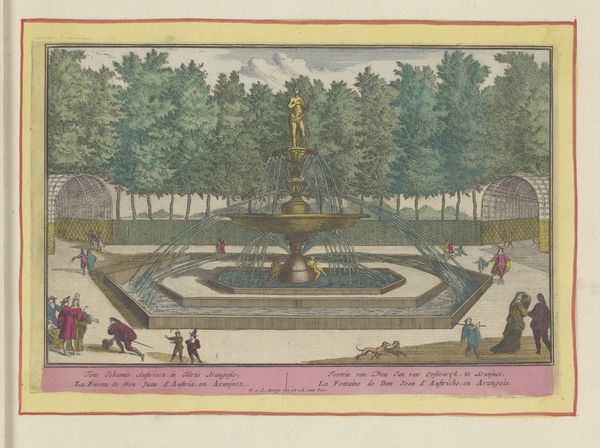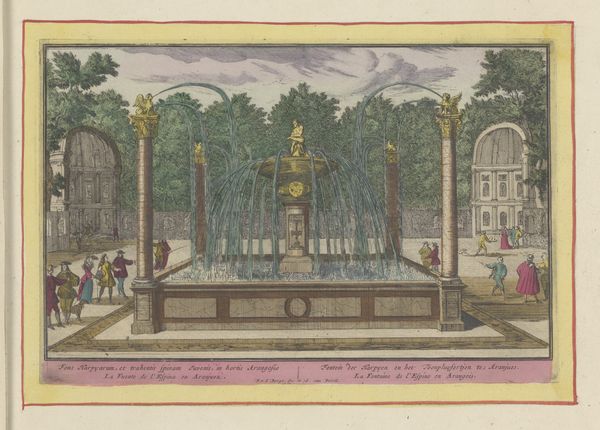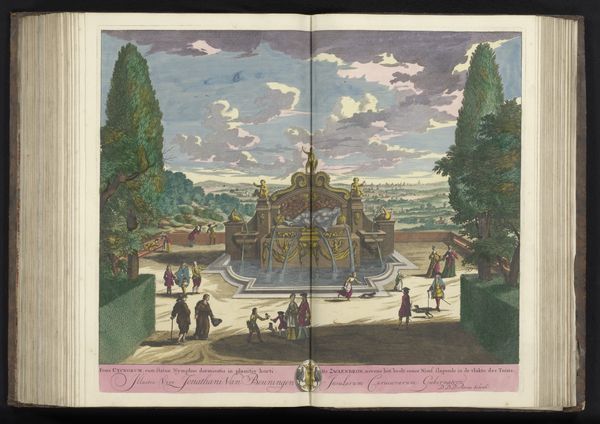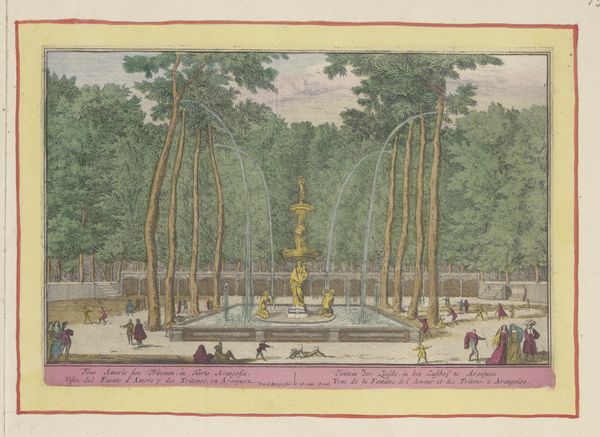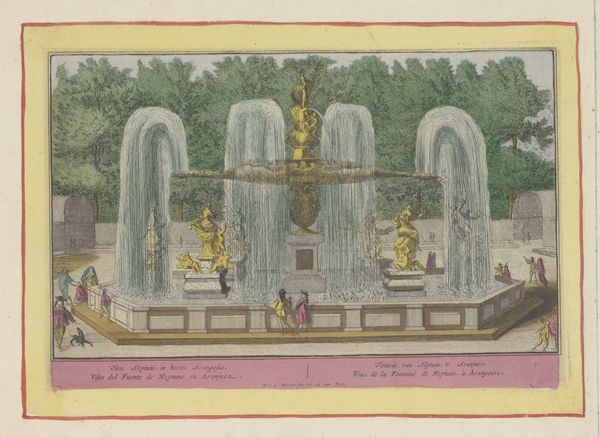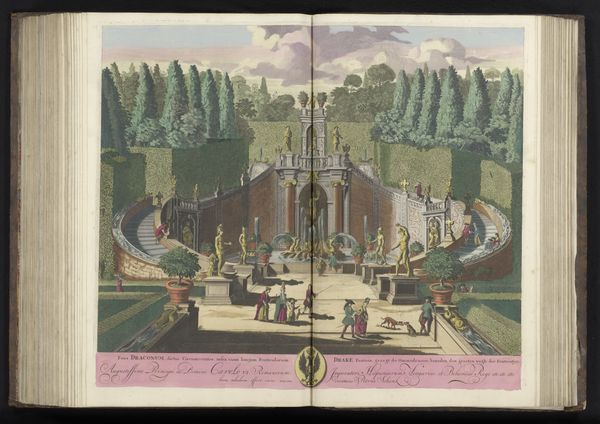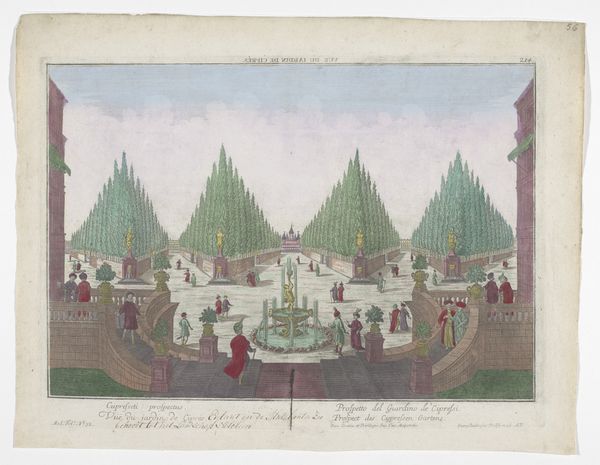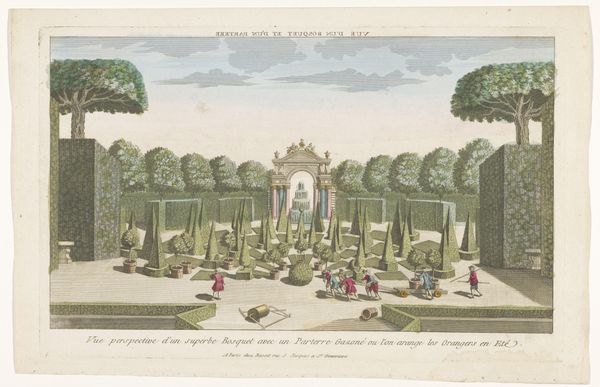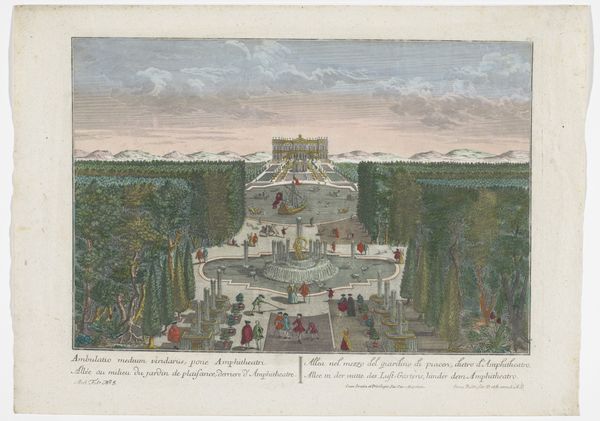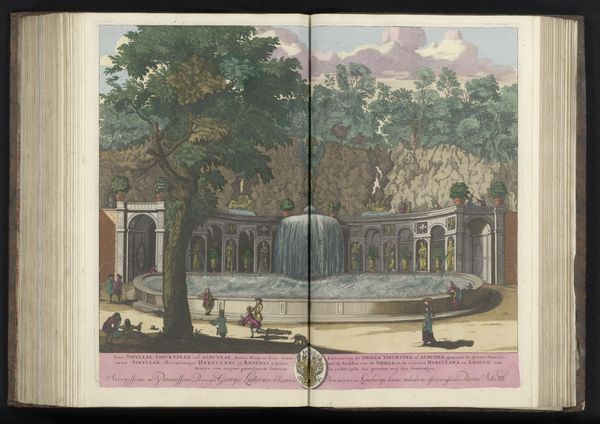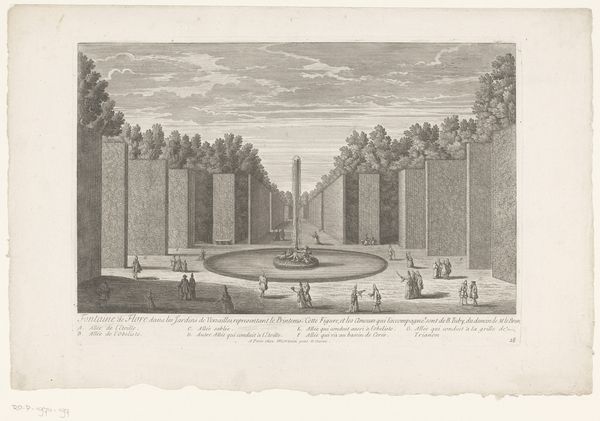
print, watercolor, architecture
#
baroque
# print
#
landscape
#
watercolor
#
cityscape
#
watercolour illustration
#
watercolor
#
architecture
Dimensions: height 172 mm, width 257 mm
Copyright: Rijks Museum: Open Domain
Curator: At first glance, the meticulous detailing and subdued palette give it an almost dreamlike quality. Editor: Indeed. What we have here is "Fontein van de dolfijnen in Aranjuez," or Fountain of the Dolphins in Aranjuez. It's attributed to Pieter van den Berge, created sometime between 1694 and 1737, using watercolor as its primary medium. Curator: The composition immediately draws the eye to the central fountain, a clear focal point. Its ornate structure, coupled with the carefully rendered surrounding figures, establishes a hierarchy of importance within the visual field. The fountain's lines are clean, but the perspective feels somewhat flattened. Editor: Aranjuez, as you likely know, was one of the Spanish royal sites. This work depicts an important public feature designed to showcase the power and sophistication of the monarchy, wouldn't you agree? The social function is clear. It portrays leisure, order, and control over nature. Curator: Precisely! The rigidity in its formal elements reinforces that reading. The geometric patterns of the fountain basin contrasted against the organic forms of the trees create a tension—order versus nature. There's an implied semiotic relationship between these designed spaces and royal power. Editor: And consider its function as a print. It disseminates that royal image, broadcasting the prestige associated with the Aranjuez palace and gardens to a wider audience. What a tool for shaping public perception. The print is not simply a representation but an active participant in a political project. Curator: Interesting point. This takes us beyond simply appreciating line and form. It highlights the print’s engagement with ideas related to power, architecture, and even urban design. Perhaps van den Berge was trying to elevate the status of these state commissions in the Netherlands. Editor: I agree. And from a historical perspective, it is enlightening to see how art served political agendas. It reminds us to consider the roles and intentions embedded within artworks like this. Curator: For me, considering the print primarily in terms of color relationships and spatial arrangements adds layers to the appreciation of art’s historical importance. Editor: Well said, let us proceed to the next piece!
Comments
No comments
Be the first to comment and join the conversation on the ultimate creative platform.
